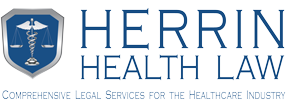Here’s a little known fact that escapes many solo physicians who are doing their estate planning: if a physician is the sole owner of a medical practice that is enrolled in Medicare and that physician owner dies, the practice automatically dissolves for purposes of Medicare enrollment.1 Additionally, all reassignments to the practice are automatically terminated.2 Thus, neither the deceased owner-physician nor the practice is enrolled in Medicare any longer, and the Medicare billing privileges of all physicians and medical professionals working for the practice are automatically revoked.3
This can have a catastrophic effect on everyone involved with the practice, as the Medicare contractor is instructed to use the date of the physician’s death or the date of revocation to end-date the reassignments.4 It does not matter to the Centers for Medicare & Medicaid Services (CMS) whether the practice is a sole proprietorship, a professional corporation, or a solely owned limited liability company.5
Wow. Imagine if you’re the surviving spouse of such a physician and you thought you had six months to a year (depending on the state’s professional corporation rules) to find a buyer to continue the practice — you now have nothing that is worth selling except medical records and some office furniture. The loss of Medicare enrollment will cause the value of the practice to plummet because the practice no longer has the ability to bill Medicare (and perhaps Medicaid and other third party payors that rely on Medicare enrollment as a condition of participating in those programs) — not now, and not at any time in the future. Continuing the practice means starting a brand new legal entity and credentialing it and all of its providers through Medicare and Medicaid, and that means a loss of four to six months of revenue.
Have a first mate
So, even if you’re the ‘captain of the ship’ and you don’t want a ‘partner,’ the smart thing to do is have another physician who actually renders medical services in the practice own one percent (1%) of the equity. Medicare regulations do not specify required ownership percentages for the various owners of a practice,6 and paying a trusted physician employee (who probably already covers for you on call, vacation, etc.) a one percent bonus every year to preserve the value of the practice should make great sense. Besides, you can draft your shareholders and other governing agreements so that this one percent owner doesn’t have the ability to control the practice or any of your actions, so all you’ve done is bought practice continuation insurance against your untimely demise.
Create a crew
Creating a situation with multiple owners (all of whom are enrolled as Medicare providers) is not as difficult as it might first appear, and there just is not a good solution to the Medicare enrollment problem otherwise. And the present inconvenience of a little loss of perceived control over the practice is vastly outweighed by the ability to preserve the value of the practice on an ongoing basis even after the death of its ‘key person.’ Believe me, having seen what the lack of attention to this detail does to the survivors of a physician suicide or airplane crash has convinced me to convince you to just do it.
Barry S. Herrin, JD, FAHIMA, FACHE, is the founder of Herrin Health Law, P.C., in Atlanta, Ga. Herrin offers more than 30 years of experience practicing law in the areas of healthcare and hospital law and policy, privacy law and health information management, among other healthcare-specific practice areas. He is a Fellow of the American College of Healthcare Executives and a Fellow of the American Health Information Management Association. He also holds a Certificate in Cyber Security from the Georgia Institute of Technology. Reach him at 404-459-2526 or barry.herrin@herrinhealthlaw.com.
1 CMS Program Integrity Manual, Chapter 15, Section 15.5.20 (C), Transmittal 445 (December 14, 2012).
2 Id.
3 If the employed physician/practitioner wants to provide services at the former practice’s location, he/she must submit a Form CMS-855I change request to add the owning physician/practitioner’s practice location as a new location of the employed physician/practitioner.
4 CMS Program Integrity Manual, Chapter 15, Section 15.5.20 (C).
5 Id.
6 See CMS Program Integrity Manual, Chapter 15, Section 15.5.20 (C).

